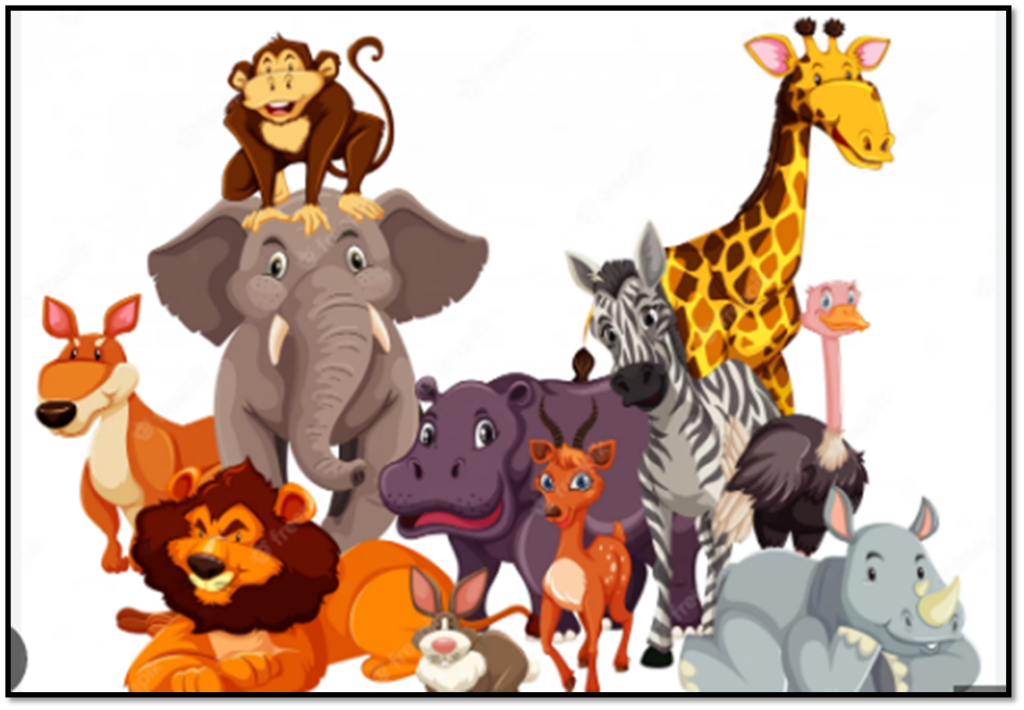
Chapter 4
How to Tell Wild Animals By Carolyn Wells
(Poem)
Thinking about the poem
(Page 45)
Q.1 Does ‘Dyin’ really rhyme with ‘Lion’? Can you say it in such a way that it does?
Ans. No, ‘Dyin’ does not rhyme with ‘Lion’. If we change the pronunciation of ‘Lion’ by speaking it as ‘Lying’ then it may rhyme with the word ‘Dyin’.
Q.2 How does the poet suggest that you identify the lion and the tiger? When can you do so according to him?
Ans. A lion is a large and tawny beast. A Bengal Tiger has black strips on its yellow coat. A lion roars when it falls upon a prey, while a tiger attacks silently. We can identify the two while roaming in the jungle.
Q.3 Do you think the words ‘lept’ and ‘lep’ in the third stanza are spelt correctly? Why does the poet spell them like this?
Ans. The words ‘lept’ and ‘lep’ are not spelt correctly. The poet has spelt them like this in order to maintain the rhythm of the poem. The correct spelling of the words, ‘lept is leapt and ‘lep’ is leap. The poet has intentionally spelt them incorrectly to create a sense of humor.
Q.4 Do you know what a ‘bearhug’ is? It’s a friendly and strong a hug-such as bears are thought to give, as they attack you! Again, hyenas are thought to laugh crocodiles to weep (‘crocodile tears’) as they swallow their victims. Are there similar expressions and popular ideas about wild animals in your own language (s)?
Ans. A bearhug is when the bear hugs his prey tightly with both hands and presses him to death. There are indeed similar expressions and popular ideas about wild animals in every language. 0
Q.5 Look at the line ‘A novice might nonplus’. How would you write this ‘correctly’? Why is the poet’s ‘incorrect’ line better in the poem?
Ans. The line “A novice might nonplus” can be written correctly as “A novice might be nonplussed”. However, the poet’s incorrect line is better in the poem as it maintains the rhyme scheme in the poem. By writing it incorrectly, ‘nonplus’ rhymes with ‘thus’.
Q.6 Can you find other examples of poets taking liberties in language, either in English or in your own language. Can you find examples of humorous poems in your own language (s)?
Ans. One can find plenty of examples in poetry where poets take liberties with language. This is called ‘poetic licence’ Poets take such liberties in order to create proper rhyming and rhythm. For example, in the following lines the word ‘prest’ is used instead of ‘pressed’ so that it may rhyme with ‘breast’. A tree whose hungry mouth is prest against the earth’s sweat flowing breast.
Q.7 Much of the humor in the poem arises from the way language is used. Although the ideas are funny as well. If there are particular lines in the poem that you especially like, share these lines with the class, speaking briefly about what it is about the ideas or the language that you like or find funny.
Ans. the way poet has used language and ideas in the poem is indeed humorous. The lines from the poem that appears to be funny and “A noble wild beast greets you”. The idea that a wild beast is going to welcome you is quite funny. The language in the line, “He’ll only lep and lep again” is also very humorous. The concept of ‘lept’ from the word ‘leopard’ generates humor.

